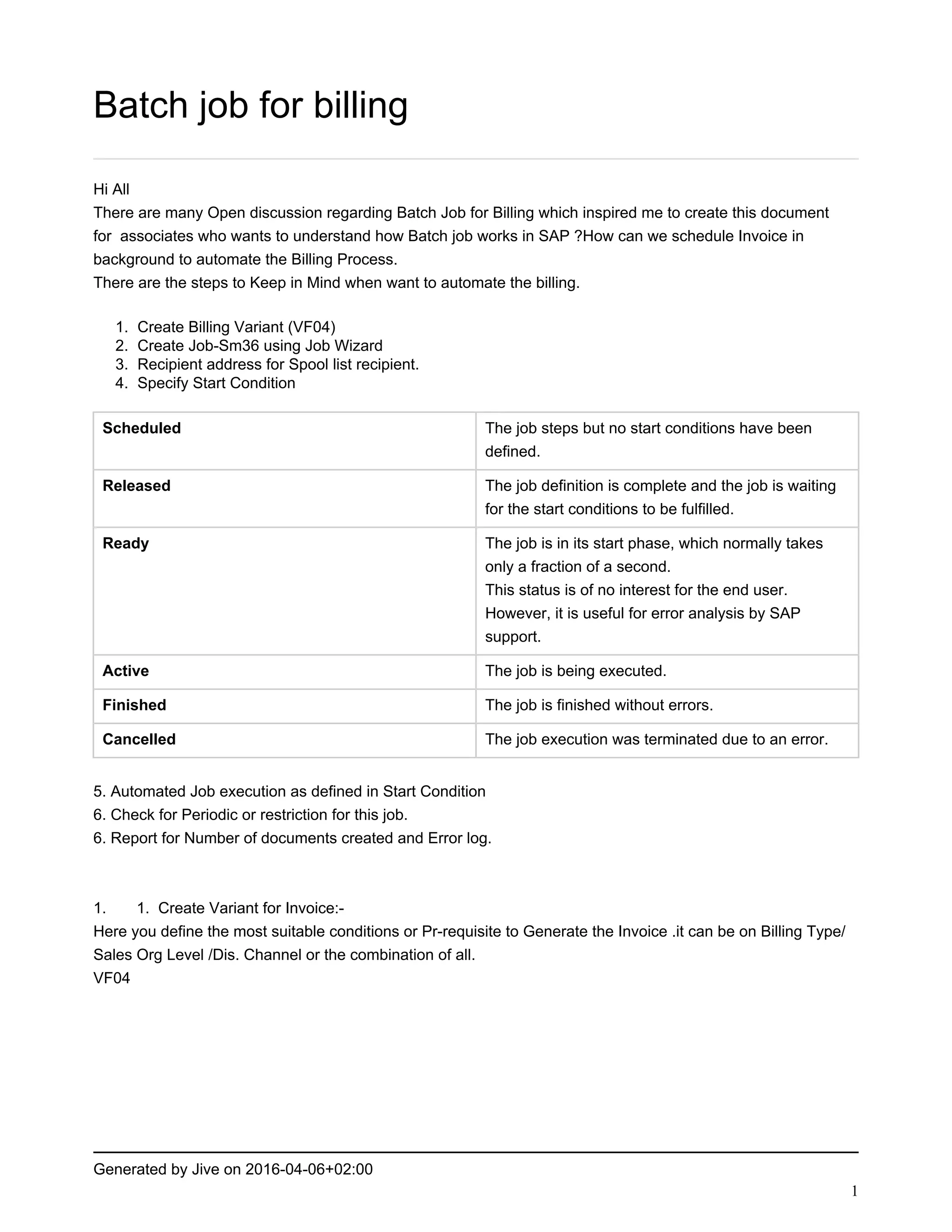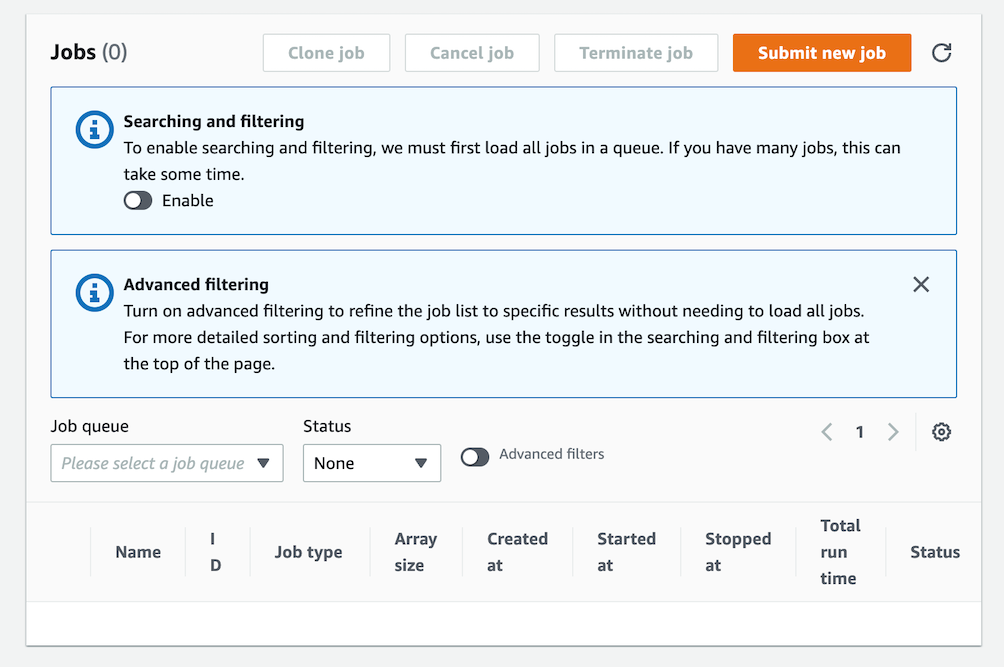Hey there, tech enthusiasts! If you're diving into the world of IoT (Internet of Things) and looking to optimize your operations, you've come to the right place. RemoteIoT batch job example is more than just a buzzword—it’s a game-changer for businesses aiming to enhance efficiency and scalability. Imagine automating repetitive tasks, processing large datasets, and managing devices remotely without breaking a sweat. Sounds cool, right? Well, buckle up because we’re about to break it down for you in a way that’s easy to digest.
In today’s fast-paced tech landscape, companies are constantly seeking ways to leverage IoT technologies for better performance. A remote IoT batch job can be your secret weapon, handling everything from data collection to device updates in one fell swoop. This article will walk you through everything you need to know, from the basics to advanced use cases, so you can make informed decisions for your business.
Whether you’re a developer, system admin, or just someone curious about how remote IoT batch jobs work, this guide is here to help. Let’s dive in and explore how this powerful tool can revolutionize your IoT workflows!
Read also:Iribitari Gal Live Action Exploring The Adaptation Of A Beloved Manga
Table of Contents:
- What is RemoteIoT Batch Job?
- Why Are Batch Jobs Important in IoT?
- Biography of Key Contributors in IoT
- Example of RemoteIoT Batch Job Implementation
- Tools and Technologies Used
- Challenges in RemoteIoT Batch Job Execution
- Security Considerations
- Optimizing Batch Jobs
- Real-World Use Cases
- Future Trends in IoT Batch Processing
What is RemoteIoT Batch Job?
Alright, let’s start with the basics. A remote IoT batch job refers to the process of executing tasks in bulk on IoT devices without requiring real-time interaction. Think of it as a way to schedule and run operations on multiple devices simultaneously, whether it’s updating firmware, collecting sensor data, or performing diagnostics. The beauty of this approach lies in its ability to handle large-scale operations efficiently while minimizing human intervention.
Batch jobs are particularly useful when dealing with repetitive or time-consuming tasks that don’t require immediate feedback. For instance, imagine a scenario where you have hundreds of smart meters spread across a city. Instead of manually updating each device, you can set up a batch job to automate the process, saving time and resources.
Now, here’s the kicker: with remote IoT batch jobs, you can manage all these operations from a central location, ensuring consistency and reducing errors. It’s like having a virtual assistant that takes care of the heavy lifting while you focus on more strategic tasks. Who wouldn’t want that?
Why Are Batch Jobs Important in IoT?
Let’s talk about why remote IoT batch jobs are such a big deal. In the IoT ecosystem, devices generate massive amounts of data, and processing this data in real-time can be resource-intensive. Batch jobs offer a solution by allowing you to process data in chunks, reducing the load on your systems and improving overall performance.
Here are a few reasons why batch jobs are essential:
Read also:Deca And Masteron Cycle A Comprehensive Guide To Building Muscle And Enhancing Performance
- Scalability: Batch jobs can handle large volumes of data and devices, making them ideal for enterprise-level applications.
- Efficiency: By automating repetitive tasks, you can save time and reduce operational costs.
- Reliability: Batch jobs ensure that tasks are completed consistently, minimizing the risk of errors.
- Flexibility: You can schedule batch jobs to run at specific times, ensuring that they don’t interfere with other critical operations.
So, whether you’re managing a fleet of connected cars or monitoring environmental sensors, remote IoT batch jobs can help you streamline your operations and focus on what truly matters.
Biography of Key Contributors in IoT
Before we dive deeper into the technical aspects, let’s take a moment to appreciate the pioneers who’ve shaped the IoT landscape. These individuals have played a crucial role in advancing the technology and making remote IoT batch jobs possible.
Data Table:
| Name | Role | Contribution | Year |
|---|---|---|---|
| Kevin Ashton | Inventor | Coined the term "Internet of Things" | 1999 |
| Vint Cerf | Engineer | Pioneered the development of IP protocols | 1970s |
| Neil Gershenfeld | Researcher | Advocated for the integration of IoT in everyday objects | 2000s |
Kevin Ashton: The Man Behind the Term
Kevin Ashton, a British entrepreneur, is often credited with coining the term “Internet of Things” back in 1999. His groundbreaking work in RFID technology laid the foundation for modern IoT systems. Ashton’s vision of connecting everyday objects to the internet has inspired countless innovations, including remote IoT batch jobs.
Example of RemoteIoT Batch Job Implementation
Now, let’s get our hands dirty with a practical example. Suppose you’re managing a network of smart agriculture sensors that monitor soil moisture levels. You want to collect data from all these sensors every night and analyze it to optimize irrigation schedules. Here’s how you can set up a remote IoT batch job:
- Step 1: Define the batch job parameters, such as the devices to include and the frequency of execution.
- Step 2: Use a cloud-based platform like AWS IoT or Azure IoT Hub to schedule the job.
- Step 3: Write a script to gather data from the sensors and store it in a centralized database.
- Step 4: Analyze the collected data using machine learning algorithms to generate insights.
By automating this process, you can ensure that your irrigation system is always up-to-date with the latest data, leading to better crop yields and reduced water wastage. Pretty neat, huh?
Tools and Technologies Used
When it comes to implementing remote IoT batch jobs, having the right tools and technologies is crucial. Here are some popular options:
- AWS IoT: A fully managed cloud service that allows you to securely interact with IoT devices at scale.
- Azure IoT Hub: Microsoft’s IoT platform that provides robust features for device management and data processing.
- Google Cloud IoT Core: A powerful solution for managing IoT devices and processing data in real-time.
- Kafka: A distributed event streaming platform that can handle large volumes of data efficiently.
These tools not only simplify the implementation process but also offer advanced features like analytics, monitoring, and security, ensuring that your batch jobs run smoothly.
Challenges in RemoteIoT Batch Job Execution
While remote IoT batch jobs offer numerous benefits, they’re not without their challenges. Here are a few common hurdles you might face:
- Device Compatibility: Ensuring that all devices in your network support batch job execution can be tricky.
- Network Connectivity: Poor or inconsistent connectivity can disrupt batch job operations, leading to incomplete tasks.
- Data Integrity: Handling large datasets requires robust mechanisms to ensure data accuracy and consistency.
- Scalability: As your network grows, you’ll need to ensure that your batch job infrastructure can scale accordingly.
Overcoming these challenges requires careful planning and the use of appropriate tools and technologies. But trust us, the rewards are worth it!
Security Considerations
Security is a top priority when it comes to remote IoT batch jobs. With so much data being processed and devices being managed remotely, ensuring the security of your operations is crucial. Here are some best practices to keep in mind:
- Encryption: Use encryption to protect data both in transit and at rest.
- Authentication: Implement strong authentication mechanisms to prevent unauthorized access.
- Monitoring: Continuously monitor your systems for suspicious activities and potential threats.
- Updates: Regularly update your devices and software to patch vulnerabilities.
By prioritizing security, you can safeguard your IoT ecosystem and ensure that your batch jobs run securely and reliably.
Optimizing Batch Jobs
Want to take your remote IoT batch jobs to the next level? Here are some tips to optimize their performance:
- Parallel Processing: Divide tasks into smaller chunks and process them simultaneously to improve speed.
- Load Balancing: Distribute workloads evenly across devices to prevent bottlenecks.
- Resource Allocation: Allocate resources efficiently to ensure that each task gets the attention it deserves.
- Monitoring: Keep an eye on job execution metrics to identify areas for improvement.
By fine-tuning your batch jobs, you can achieve better results and maximize the value they bring to your organization.
Real-World Use Cases
Let’s wrap things up by exploring some real-world use cases of remote IoT batch jobs:
Smart Cities
In smart cities, batch jobs are used to manage streetlights, traffic signals, and waste management systems. By automating these operations, cities can improve efficiency and reduce costs.
Healthcare
Hospitals use remote IoT batch jobs to monitor patient vitals, manage medical equipment, and analyze diagnostic data. This leads to better patient outcomes and more efficient healthcare delivery.
Manufacturing
In the manufacturing sector, batch jobs are employed to monitor production lines, predict maintenance needs, and optimize supply chain operations. This helps companies improve productivity and reduce downtime.
Future Trends in IoT Batch Processing
As technology continues to evolve, the future of remote IoT batch jobs looks promising. Here are some trends to watch out for:
- Edge Computing: Processing data closer to the source will reduce latency and improve performance.
- AI Integration: Incorporating AI into batch jobs will enable smarter decision-making and automation.
- Blockchain: Using blockchain for secure and transparent data management will enhance trust in IoT ecosystems.
With these advancements, remote IoT batch jobs will become even more powerful tools for businesses across industries.
Conclusion
And there you have it—a comprehensive guide to remote IoT batch jobs. From understanding the basics to exploring real-world applications, we’ve covered everything you need to know to harness the power of this technology. Remember, remote IoT batch jobs aren’t just about automating tasks; they’re about transforming the way we interact with IoT devices and data.
So, what’s next? We encourage you to take action by experimenting with batch jobs in your own projects. Share your experiences in the comments below, and don’t forget to check out our other articles for more insights into the world of IoT. Together, let’s shape the future of connected technology!


